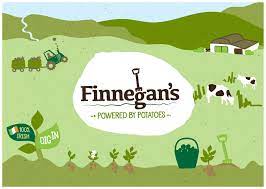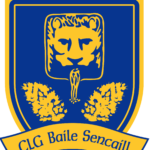U14s were a Furze to be reckoned with
One of the most impressive teams in Seneschalstown in 2005 was the U14s, who claimed the Division Three league crown and also reached the semi-final stage of the Division Two championship. Senior club secretary Ian Maguire, who managed the side in conjunction with selectors Phonsie Gilsenan and Francis Flynn, was delighted with how the lads stood up over the course of a testing year.
As proud traditions go, Seneschalstown is right up there with the best of them in the Royal County. The club has given Meath GAA many wonderful players over the years and will undoubtedly continue to do so. How many of the impressive U14 Class of ’05 will go on to play for club, and perhaps even county with distinction?
Of course, nobody knows for sure but the sense of maturity and teamwork displayed by this crop during the season past must surely augur well. They deservedly got their hands on silverware in the form of the Division Three county league title but even more encouraging than this was the tremendous degree of progress the players made during the spring and summer months.
The Seneschalstown lads kicked off their victorious U14 league programme with a 5-6 to 3-8 defeat of Walterstown on Saturday March 12 and beat Oldcastle in their next group outing, 5-10 to 4-6 on April 3.
Drumconrath/Meath Hill pipped them by a point in a third-round thriller (2-12 to 4-5 on Wednesday April 13), but the Furze recovered with comfortable victories over Inny Gaels and Wolfe Tones to qualify for the semi-finals.
In the last four, Dunderry were comprehensively beaten 6-12 to 1-4 on Wednesday May 11, to set up a final re-match against Drumconrath/Meath Hill, which took place in Castletown seven days later.
Seneschalstown led by a point at half-time, 2-4 to 0-5, but trailed as the final whistle approached. But they refused to throw in the towel and, incredibly, gained a dramatic success when James Conlon fired to the net in the last minute, for a 4-5 to 2-10 victory.
The management triumvirate first assembled their squad in February, working off a group of 25 boys and girls for the year, some of whom were still under 13 and even U12, but all of whom contributed to the success that came at the season’s end.
Four or five training sessions were held at weekends and challenge games were organised against Skryne and Bective to get the players ready for competitive action. When the league commenced, the team hit the ground running, though Ian Maguire stresses: “The emphasis in the early games, particularly the challenges, wasn’t on winning but on playing as a team. We wanted them to play as a unit and we got an excellent response.
We finished top of the group and played Dunderry in the semi-final, which we won comfortably. The final was always going to be a difficult match against a team who had beaten us by a point in the group stage. But we kept at it and got the goal in the last minute for a good win. The final was tight all the way through and could have gone either way, but our lads showed great determination.
The more games we played, the better and more intelligent football they produced. There’s no way we’d have won that final at the start of the year, but the lads grew in stature with each match and their confidence increased. We played some very good football in the semi-final, with intelligent running and passing, low balls, good support play, and that win gave us great confidence going into the final.
The players were nervous for the final and didn’t reproduce their semi-final form, but they did well to come through.”
The U14s also got to the semi-final stage of the championship. The tragedy that befell the community in May cast a large shadow over everything, however. Nine of the team were on board the bus when it crashed and football became very much a secondary concern (if even that) to everybody not just in Seneschalstown but throughout Meath.
When the championship finally got underway, Yellow Furze won their first four matches on successive weekends before coming a cropper against old foes Drumconrath/Meath Hill. They were depleted for that match, missing four key players through a combination of injuries and unavailability, so there was no shame in defeat (the north Meath side went on to win the final).
The team manager is convinced that, all things considered, the team did excellently: “They had a great year. We said to them afterwards that if they go on to win a league and get to a championship semi-final every year from here on that they’ll be happy and they’ll have some medal collection by the time they retire!
The players put in a wonderful effort. They showed great discipline, determination and dedication. The work rate was impressive and they stuck at it. They listened to us and they did what we asked them to do. The improvement they made was dramatic. There were three girls on the panel and they were brilliant too. Every one of them was easy to work with and they were prepared to listen and learn. They wanted to play the game and they wanted to win, which is a manager’s dream.”
The management trio that was in charge of the U14 team in 2005 hope to stay on with the same group in the future to oversee their ongoing development. “Even if we had lost the league final, we’d still have considered it a successful year,” Ian notes. “We played a lot of good football and developed as a team, and that was our primary concern. We’re losing four or five but we have the nucleus of a good U14 side again next year, which is also exciting”
The team also maintained Seneschalstown’s proud reputation of providing talent to the county. On the intercounty front, Aidan Finnegan and Mark Gilsenan represented the county at under 14 level, while Niall McCabe also had trials with the Meath U14s.
For a club so accustomed to success over the years, including SFC glory, how significant was the U14 breakthrough in 2005? “This was a very big one for us. We feel that there’s the makings of a senior championship team in our current U17s and many of these U14s could also make the grade. It had been a long time since we won an U14 title, so this is a huge deal. These guys are the future of the club.
They hadn’t won at U10, 12 or 13 levels, so this could prove a significant turning point for this team. A lot of them also played U15 and some of them were even on the U17 panel last year, so they’ve plenty of talent.”
Complementing his work with the juveniles, Ian (a former juvenile club secretary) is also in his second year as secretary of the senior club. How would he review their year? “It was a mixed bag. We saw fantastic displays against Simonstown, Walterstown and Wolfe Tones and terrible ones against Skryne and Dunshaughlin, when we weren’t at it at all.
We’re much better than we showed. We should be winning Division Two but ended up near the bottom of the table. On a positive front, our junior Bs did well and we have a strong U21 team, so it’s not all doom.
In fact, there’s no doubt in my mind that there’s still a senior championship in this club if they turn it around.”
Seneschalstown, 2005 Meath U14 league Division Three winners: C Flynn; C Dunleavey, C Noonan, D. Seepersad; T Kiernan, D McDonnell, A Gleeson; A Finnegan (0-1), N Groome; A Hewitt (1-0), S McCabe, J Conlon (1-1); G McHendry, M Gilsenan (capt, 1-2), J Gilsenan (1-1).
Sub: N Sheehy
Time to deliver
Seneschalstown’s failure to reach the knock-out stages of the senior football championship came as a source of great disappointment to midfielder Alan Finnegan, who feels the team needs to deliver success sooner rather than later.
Alan Finnegan admits that time is not on his side. As one of just three survivors from the last Seneschalstown team to taste senior championship success 11 years ago, he may not get many more chances at renewing acquaintances with the Keegan Cup.
Though just 30, the former county underage star has been plagued by injury throughout his playing career and 2005 was another frustrating year in this regard with an ankle problem forcing him to sit out Seneschalstown’s last four championship outings. While greatly encouraged by the number of quality young players the Yellow Furze combination has produced in recent years, Finnegan feels that the club’s best chance of championship silverware could come in the next year or two.
“We have a nice blend of youth and experience at the moment, but that won’t always be the case and we need to challenge for a senior championship sooner rather than later,” he says.
“When we played Walterstown in our final group match this year, we had 10 under 21 players in the starting team. These young lads have lots of potential, but they need the help of experienced players and this is what the likes of Graham Geraghty, Stephen Dillon and myself bring to the team. I can’t speak for the other lads, but I feel I’ve only got a couple of years left in me. I’ve had a tough time with injuries and it doesn’t get any easier as you get older.”
After reaching the quarter-finals in 2004, the blue and golds had hoped to at least equal that achievement last year. But despite beating Wolfe Tones and Walterstown in their last two group matches, they were edged out for a place in the knock-out stages by Dunshaughlin on scoring difference.
“We had set our sights on reaching the quarter-finals at the start of the year, so it was obviously disappointing when we didn’t achieve that target. Looking back on the championship, we paid a heavy price for conceding a lot of goals in our first few matches.
Our defence tightened up considerably in the latter stages of the campaign, and while we pulled away from relegation trouble, we were just short of making the knock-out stages. The hardest result to take was the fourth round defeat to Skryne. We dominated that game for long periods, but the concession of three goals cost us dearly.
Our defensive problems were exacerbated by the unavailability of our regular centre back Mark Carey, who was ruled out this year with a cruciate ligament injury,” he adds.
Under the management of Padraig Coyle, Tony McDonald and Paul Donoghue, who were all members of the 1994 Keegan Cup-winning team, Seneschalstown opened their championship campaign with a 0-12 to 1-9 draw against last year’s beaten finalists Simonstown Gaels. Simonstown led by 1-6 to 0-5 at the interval, but the east Meath side staged a fine recovery in the second half which culminated in them scoring a last-gasp equalizing point.
Seneschalstown secured their first win when defeating Kilmainhamwood by 1-14 to 0-10, but they then suffered three consecutive defeats to St. Patrick’s (2-9 to 5-14), Skryne (1-8 to 3-8) and Dunshaughlin (0-3 to 2-14).
With just three points from five matches, Seneschalstown were threatened by relegation going into their last two group matches. They arrested the slide, however, when accounting for newly-promoted Wolfe Tones by 1-13 to 0-11. The Tones led by 0-2 to 0-1 after 12 minutes, but Seneschalstown went on to lead by 0-7 to 0-6 at the break.
A Cian Ward free levelled the scoring within two minutes of the restart, but Seneschalstown never looked back after Graham Geraghty scored the only goal following hesitancy in the Wolfe Tones defence.
Seneschalstown ended the campaign with a 1-13 to 0-15 win over Walterstown, but Simonstown’s defeat of Dunshaughlin meant that their efforts were all in vain. Backed by the elements, Seneschalstown made the early running with Brian Sheridan fisting Gary Conlon’s centre to the Walterstown net inside 45 seconds and apart from a brief period in the early stages the sides weren’t level again until the 56th minute when Charles McCarthy pointed five minutes on from his re-introduction to the fray.
Joe Sheridan, who finished with eight points, landed two late frees, the latter from around 55 metres into the wind to give his side a two-point cushion going into six minutes of stoppage time during which time Ronan Barry, who also got eight scores, pulled one point back from a close range free.
Sheridan sent another long range effort wide in the last action of the game, but Seneschalstown’s joy quickly evaporated when news from the Simonstown-Dunshaughlin game filtered through.
Padraig Coyle’s charges fully deserved to finish a disappointing campaign on a high note after responding positively to the Walterstown challenge, particularly in the latter stages.
Apart from his scoring contribution that included four frees, two 45s and two from play, Joe Sheridan was the most consistent performer at midfield and might have added a goal after his fine surging run and shot forced a fine save from Alban Crosbie in the 14th minute.
However, he pointed the subsequent ’45, to restore his side’s lead to leave it 1-2 to 0-4, and with Graham Geraghty, Damien Sheridan, Robert Ruddy and Joe Cowley also getting on the scoresheet, Seneschalstown led by 1-7 to 0-6 at the break.
The highly influential John Davis, who finished with 0-4, kick-started the Walterstown revival with the first score of the second half. The margin was down to the minimum on four occasions before McCarthy levelled with a fine effort four minutes from time, but despite going on to win, Seneschalstownís efforts went unrewarded.
Another objective of Seneschalstown’s at the start of the year was to achieve promotion to Division 1 of the league. But as it transpired, they were fortunate to retain their Division 2 status.
“Our league form just wasn’t good enough,” reflects Finnegan, who played alongside the likes of Hank Traynor, Paddy Reynolds, Darren Fay, Trevor Giles and Ollie Murphy on the Meath team that lost the 1993 All-Ireland minor final to Cork.
“We wanted to get promoted, but we lacked consistency and in the end, were lucky to stay in Division 2. Hopefully we can make amends next year in both the league and the championship.”
Alan has nothing but praise for the young players who now backbone the Seneschalstown senior team.
“The young lads that have come through in the last couple of years have been brilliant for us. Most of them played in the 2003 and 2004 under 21 finals which unfortunately ended in defeat, but I’m sure they’ll have their day at senior level.
You would have to be optimistic about the future and assuming these lads can continue their current rate of development, there is no reason why we can’t win a senior championship within the next two years,” he concludes






























